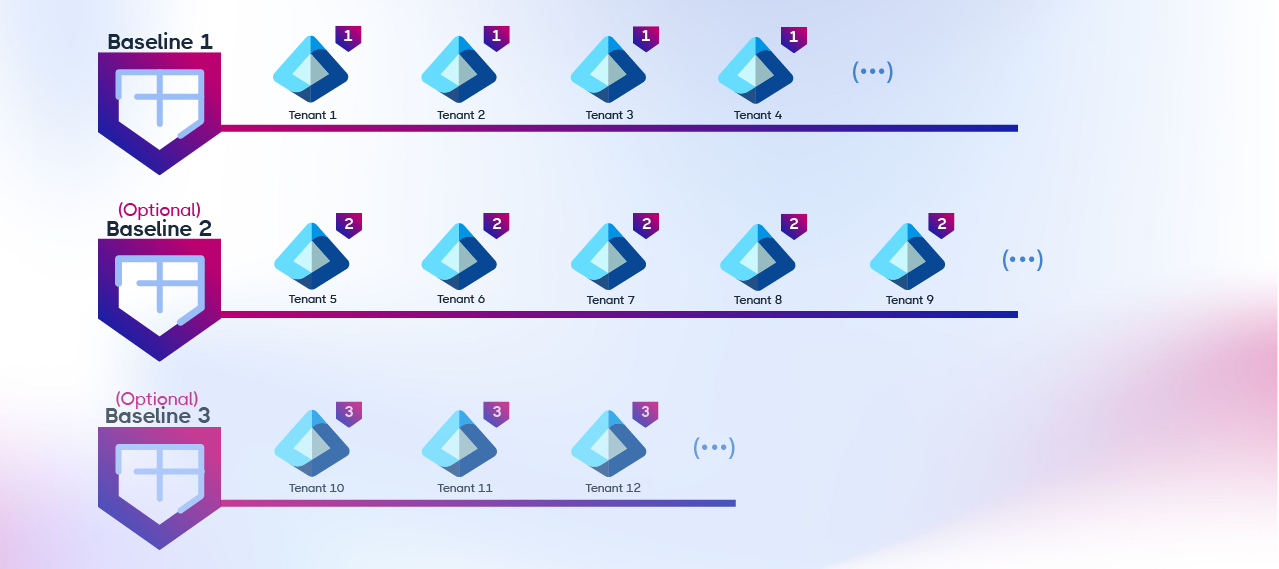Configuration Manager operates on the principle of a master baseline tenant where you build and maintain all of your configurations exactly as you want them.
Under this model, you can easily align all of your tenants (downstream or client tenants) to the baseline. This allows you to create and manage configurations in one centralized place, and ensure all tenants remain in sync with your baseline configurations.

Using Configuration Manager, you can align client, or downstream, tenants to this baseline to seamlessly:
- deploy configuration changes to all tenants in one action
- monitor each tenant for deviations from your baseline
- and keep tenants aligned to your best practice configurations
Defining and building a baseline tenant is one of the most important aspects of utilizing Configuration Manager successfully.
What is a baseline tenant?
In Configuration Manager, a baseline tenant is any Azure tenant where your ideal set of Microsoft 365 configurations are housed.
A baseline tenant can be an existing, preconfigured tenant that is brought to the platform; or a baseline can be a new, empty tenant that is populated and organized using Configuration Manager.
What is a downstream or client tenant?
Please note that this feature is not available in the Configuration Manager SaaS version.
A downstream tenant, or client tenant, is any Azure tenant that you would like to manage using Configuration Manager.
The downstream tenant will be nested under a baseline tenant. This relationship is necessary to allow Configuration Manager to:
- automatically compare the downstream tenant to your baseline configurations on Reconcile
- and for you to easily apply baseline configurations to your downstream tenants and monitor for drift.
